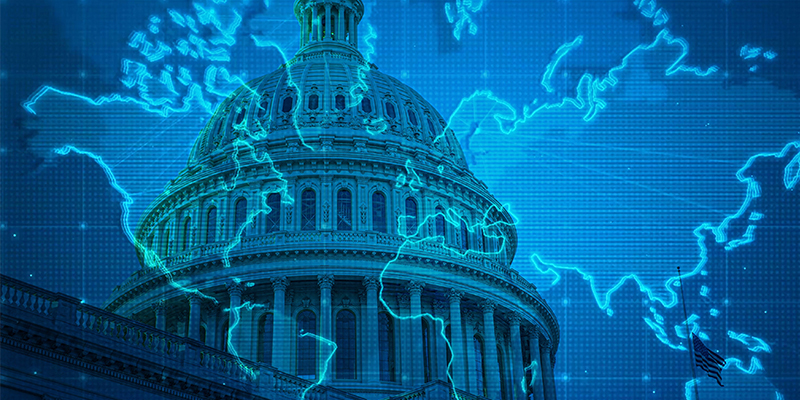Last November, the Biden administration began another chapter in the long-running saga to develop a lasting definition for the phrase “waters of the United States” (“WOTUS”) when the Environmental Protection Agency (EPA) and U.S. Army Corps of Engineers (Army Corp) issued a notice of proposed rulemaking on the matter. With that, they join the Obama administration and the Trump administration in attempts to give meaning to the phrase.
The vague WOTUS language, which appears in amendments to the Clean Water Act of 1972 (CWA) and determines which bodies of water or wetlands are subject to the law’s permitting requirements regarding certain activities (such as land development), has been a continuous source of controversy and litigation. That is because Congress left the interpretation of what constitutes a WOTUS to the oversight agencies – EPA and Army Corps –with courts serving as the arbiters of whether an agency’s application of the law in a particular instance was appropriate, and U.S. Supreme Court decisions adding to the confusion.
The Biden proposal will not be the last chapter in this story, because the U.S Supreme Court on Jan. 24 announced that it would be deciding a case on the issue in its next term, revisiting its 2006 ruling in Rapanos v. United States. That case led to much of the confusion and disagreements that exist today. In Rapanos, the Supreme Court interpreted the scope of the WOTUS language more narrowly than the agency regulations that existed at the time but did not offer a controlling majority opinion that would set a single WOTUS standard.
Justice Antonin Scalia’s opinion in that case, joined by three other justices, adopted a rule that “waters” in WOTUS meant “relatively permanent, standing, or continuously flowing bodies of water” (such as streams, rivers and lakes) and wetlands with a “continuous surface connection” to such waters. Justice Anthony Kennedy, concurring with the majority, offered a different test, concluding that a case-by-case examination that required a “significant nexus” between the water in question and traditional navigable waters could be used.
Because of this 4-1-4 split Supreme Court opinion, lower court rulings have used the differing standards, resulting in unpredictability in the application of the CWA. In 2015, the Obama administration issued a WOTUS rule that expanded the reach of the CWA by relying on Kennedy’s “significant nexus” rationale. It faced immediate legal challenges, with some courts upholding the Obama rule and other courts staying the rule. The result was that the rule was in effect in only some parts of the country and not in others. The Trump administration repealed the Obama rule, then issued its own WOTUS regulation, called the “Navigable Waters Protection Rule” (NWPR), which relied on the Scalia “relatively permanent” test, narrowing the areas under the CWA’s jurisdiction. The Biden administration in June 2021 announced they intended to revise the Trump NWPR, but was forced to hurry and issue a rule in the fall when federal courts in Arizona and New Mexico vacated the Trump rule, preventing its application.
The inability of Congress, the regulatory agencies, or the courts to provide a definition for WOTUS that is consistent with the environmental goals of the CWA and increases predictability as to the law’s jurisdictional reach has created uncertainty for various stakeholders and for the public at large. Agricultural interests have mobilized against an overly expansive reading of the statute, characterizing it as an assault on their property rights. Real estate developers are faced with not knowing when an area is a wetland subject to the CWA, requiring costly studies that then must be submitted to agency field offices for review. The resulting case-by-case approach appears arbitrary, with determinations often delayed and inconsistent, with field offices differing with each other as to how they view a certain set of circumstances.
Unsurprisingly, with Democratic and Republican administrations each having to react to court decisions regarding WOTUS, and working to advance their own views in each subsequent iteration of regulation, the issue has become a political and rhetorical battle ground. All 50 Republican Senators signed onto a comment letter detailing their concerns with the regulation and asking the EPA and Army Corps to delay the regulation in light of the Supreme Court case to be heard in the fall. In response, 120 Democrats in the House of Representatives sent their comment letter urging the agencies to move forward with the regulation.
NAIOP provided its own comments, which focused primarily on the need for predictability and consistency in the implementation of the regulation, with exclusions that the agencies themselves have said are their longstanding practice being codified into the regulation. Because the U.S. Supreme Court could be deciding the issue this fall when it considers Sackett v. EPA, we also feel that it makes sense for the EPA and Army Corps to delay the WOTUS regulation until the Court renders its opinion. Ultimately, it may be the November congressional midterm elections that have the most immediate impact if Republicans take over the majority in either the House or Senate. In that case, congressional appropriators for the agencies are sure to insert prohibitions against either EPA or the Army Corps using any funds to implement the regulation.








